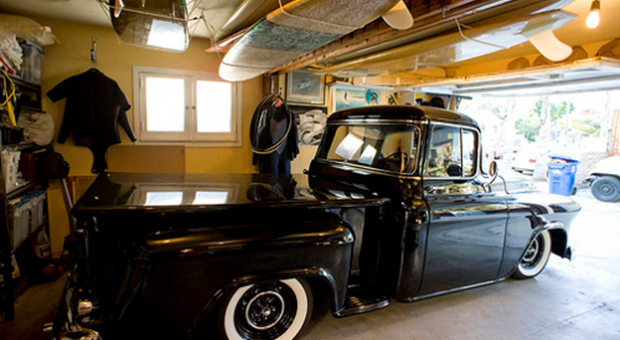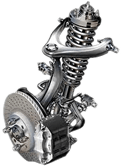
When it comes to a vehicle’s performance, the suspension system plays a crucial role in ensuring a smooth ride and handling.
The suspension system is responsible for keeping the vehicle stable and balanced, especially during turns, acceleration, and braking. The rear suspension is a critical part of this system that is often overlooked, but it is equally important to the vehicle’s overall performance.
In this article, we’ll explore the role of the rear suspension and common problems that drivers may encounter.
The Role of the Rear Suspension
 The rear suspension is responsible for maintaining the vehicle’s stability and balance by controlling the movement of the rear wheels. The suspension system consists of several components, including shock absorbers, springs, and control arms.
The rear suspension is responsible for maintaining the vehicle’s stability and balance by controlling the movement of the rear wheels. The suspension system consists of several components, including shock absorbers, springs, and control arms.
The shock absorbers, also known as dampers, are designed to absorb the shocks and vibrations that occur when driving on uneven roads or over bumps. They work by converting the kinetic energy of the suspension movement into thermal energy, which dissipates through the hydraulic fluid and the piston.
The springs provide the necessary support for the vehicle’s weight and help absorb any impact from uneven road surfaces. There are two primary types of springs: coil springs and leaf springs. Coil springs are commonly used in modern cars, while leaf springs are more commonly found in trucks and heavy-duty vehicles.
The control arms are designed to control the movement of the suspension system and keep the wheels aligned. They work together with the shock absorbers and springs to provide a smooth ride and better handling.
Common Rear Suspension Problems
Like any other vehicle component, the rear suspension is prone to wear and tear over time. Here are some of the common problems drivers may experience:
- Bumpy Ride: If the shock absorbers or springs are worn out or damaged, the vehicle will ride roughly and bounce excessively over bumps.
- Sagging Rear End: A sagging rear end is often a sign of worn-out springs or suspension bushings. It can also be caused by overloading the vehicle.
- Uneven Tire Wear: If the wheels are not aligned correctly, the tires will wear unevenly, leading to a shorter lifespan for the tires and reduced handling performance.
- Clunking Noise: A clunking noise when driving over bumps or turning is often a sign of worn-out or damaged suspension components, such as bushings or control arms.
- Leaking Shock Absorbers: If the shock absorbers are leaking hydraulic fluid, they may not function correctly, leading to reduced handling and a rougher ride.
Conclusion
The rear suspension is a critical part of a vehicle’s overall performance, and drivers must pay attention to any signs of wear and tear. Regular maintenance and inspection of the suspension system can help prevent common problems and ensure a smoother ride and better handling.
If you experience any of the above problems, it’s important to have your vehicle inspected by a professional mechanic who can diagnose and repair the issue. Neglecting the rear suspension can lead to more significant problems down the road and compromise the safety and performance of the vehicle.
By understanding the role of the rear suspension and common problems drivers may encounter, you can be better equipped to maintain and care for your vehicle’s suspension system. A well-maintained suspension system will not only provide a smoother ride and better handling but also improve the longevity and overall performance of your vehicle.
















